
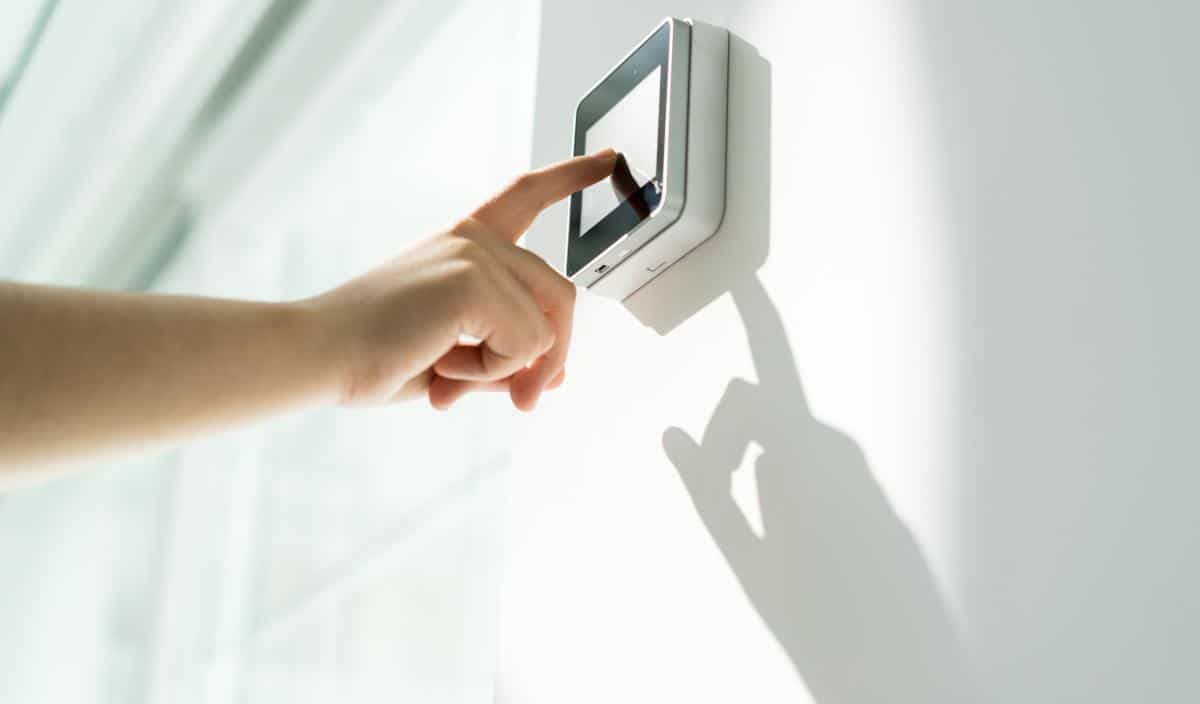
Jasmin Merdan / Getty Images
Smart home gadgets and technology can help make homes more energy efficient than ever before. From thermostats and lightbulbs to plugs and sprinklers, there is almost no aspect of the home that can’t be integrated with a smart home system. But which devices can help you save the most energy?
What is a smart home system?
A smart home system is built around home automation. Smart devices have the capability of connecting to a smart home hub like Amazon Alexa or Google Assistant through your Wi-Fi network, Bluetooth, or Z-wave technology. You can then control and monitor these devices through a smartphone app, usually on iOS or Android devices, or through voice commands with a smart speaker.
One of the biggest uses of smart home functionality is in the smart home security system. Smart locks, video doorbells, wireless security cameras, and even garage doors can be managed through voice control or a mobile app.
Energy efficiency is another important factor in the choice of smart home devices. Through the use of a smart sprinkler, smart plug, smart lighting, or smart thermostat like the Google Nest or ecobee SmartThermostat, homeowners can see major improvements in their energy and water consumption.
And that is just the tip of the iceberg. More and more devices are being integrated into smart home setups. Even appliances like stoves, dishwashers, and refrigerators are now connected to the internet.
What are the best smart home devices for saving energy?
As mentioned, one of the biggest advantages of smart home devices is in saving energy. One thing to consider before adding new devices or appliances is getting a home energy audit for an accurate picture of where your home is less energy-efficient. Once you know that, here are some of the best smart home devices to help you become more energy efficient.
Each product featured here has been independently selected by the writer. If you make a purchase using the links included, we may earn commission.
Smart thermostats
Smart thermostats help regulate and automate your heating and cooling, cutting down on the total energy consumption and reducing those costs. Smart thermostats work by connecting to your current HVAC system. The vast majority of them feature a smart device app, meaning users can control all of the settings and features remotely.
On average, they can save you around 8% on heating and cooling costs, or $50 annually. The age of your current HVAC system, however, can affect this. If you have an old and outdated system, there are limits on the effectiveness of a smart thermostat.
Emerson Sensi Touch Smart Thermostat
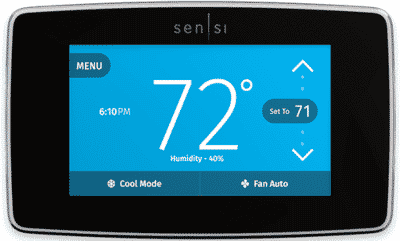
Emerson
Why buy: The Emerson Sensi smart thermostat was our pick for best overall smart thermostat. It can save you up to 23% on your energy usage, and you can find it at a very affordable price of 0 on Amazon. The Emerson thermostat is also compatible with Alexa, Google Home, Apple HomeKit, and Samsung SmartThings.
ecobee SmartThermostat
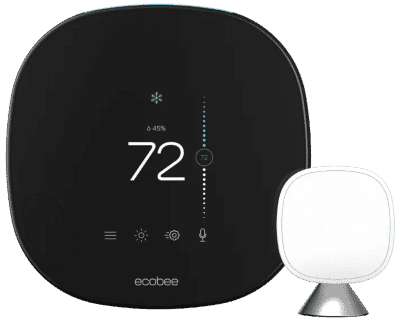
ecobee
Why buy: Despite its relatively high price tag of 9, the ecobee SmartThermostat offers a ton of energy-saving features. The best part is that with its new eco+ software, the SmartThermostat can help you save up to 23% on your annual energy costs. Plus it has built-in Amazon Alexa functionality so there’s no need to purchase an Amazon Echo.
Nest Learning Thermostat

Nest
Why buy: The Nest Learning Thermostat is both Google Assistant- and Alexa-enabled. It can potentially save you as much as 10% to 12% on your heating bill and up to 15% on your cooling bill. This thermostat also has voice commands for even greater convenience, and it automatically learns your heating and cooling preferences to optimize your energy usage.
Smart lighting
Smart lightbulbs and smart lighting systems can connect to your home’s smart system, so you can set schedules for when they are on and off. Combined with the greater efficiency of LED bulbs, it isn’t out of the question to save between 25% and 80% on the energy used by your lights when you make the switch to smart lights.
Philips Hue Starter Kit
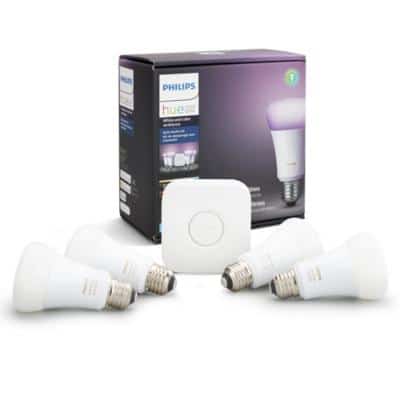
Philips Hue
Why buy: The Philips Hue lighting system offers everything from starter kits and light strips to table lamps and bulbs. Though the system can be a bit pricey, there’s a lot that comes with it. They can be paired easily through a rather intuitive app, offer integrations with third-party devices, and even display a wide array of colors.
Wyze Bulb
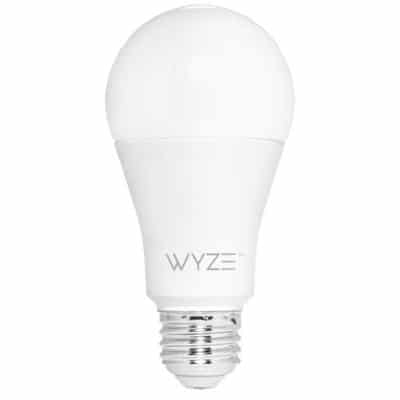
Wyze
Why buy: If you’re looking for a far more cost-effective option, look no further than the Wyze Bulb. These smart Wi-Fi light bulbs will last up to 25,000 hours, and you can get 4 for under . Though it doesn’t have the color option that the Hue does, it can pair with voice assistants like Google Assistant and Alexa to make for a convenient smart bulb setup.
Sengled Smart LED Light Bulbs
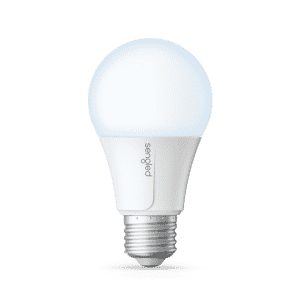
Sengled
Why buy: These Sengled Smart LED bulbs are also an affordable smart light option to help automate your home’s lighting. Compatible with SmartThings, IFTTT, Google Assistant, and Alexa, it integrates smoothly with just about any smart home setup. The outdoor bulbs are weatherproof and come with a motion sensor for optimal usage.
Smart plugs
Like smart bulbs, smart plugs and smart power strips can help mitigate wasted energy use. They work with compatible devices to control when they are running – think lamps, fans, appliances, air purifiers, etc. Even better, they come with the capability of handling 4 to 8 devices at once, making it a comprehensive hub for your electronics.
Though the savings here are not quite as dramatic, it adds up when paired with other smart energy-efficient devices. Some of the best will come with mobile apps, providing remote functionality.
Kasa Smart Plug Mini
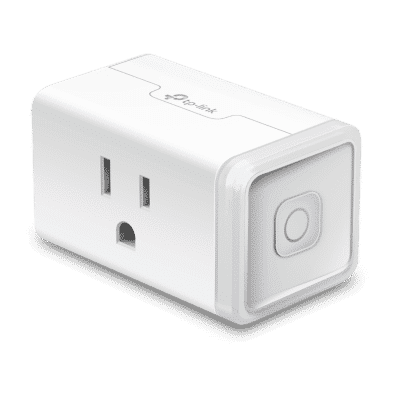
Kasa
Why buy: Though this Kasa Smart Plug Mini is meant to handle one or two devices at a time, it is perhaps the best on the market. It’s highly affordable and can work with voice assistants like Amazon Alexa and Google Assistant by connecting to your Wi-Fi network. It also features schedule customization, timers, and even away modes to maximize your energy savings.
WeMo Wi-Fi Smart Plug

Belkin
Why buy: This WeMo Wi-Fi smart plug remains affordable while still offering Alexa, Google Assistant, and even Apple HomeKit compatibility. The WeMo app allows you to control and schedule the plug from anywhere, and the plug itself comes in a compact, space-saving design that also allows for voice control.
iDevices Wall Outlet
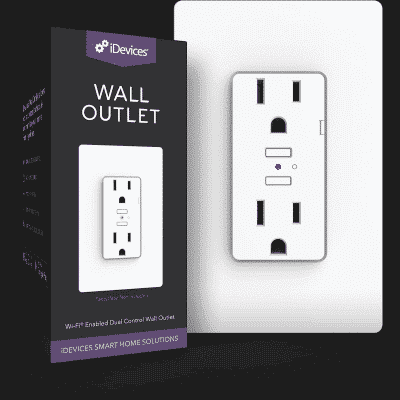
iDevice
Why buy: In addition to a single plug, you can also install a smart outlet to connect multiple devices. The iDevices Wall Outlet is great for automating lights, lamps, switches, fans, and any other electronics. It is compatible with most smart home systems and can give you independent voice control of both the top and bottom outlets.
Smart sprinklers
With smart sprinkler systems, water waste is kept to a minimum thanks to scheduling functions and improved fixtures that use water more efficiently.
Generally speaking, most EPA WaterSense-certified smart-controlled sprinklers can save up to 15% of the water applied versus a standard sprinkler system. In some areas, this can be huge, as 70% of outdoor water use can come from outdoor sprinklers.
Rachio 3

Rachio
Why buy: One of the best smart sprinklers available on the market, the Rachio 3 Smart Sprinkler Controller gives you wireless connectivity and 8-zone functionality, which makes it easier than ever to properly manage outdoor water usage. It is on the expensive side, but includes a feature that predicts weather changes to adjust your water use accordingly.
Orbit B-Hyve XR
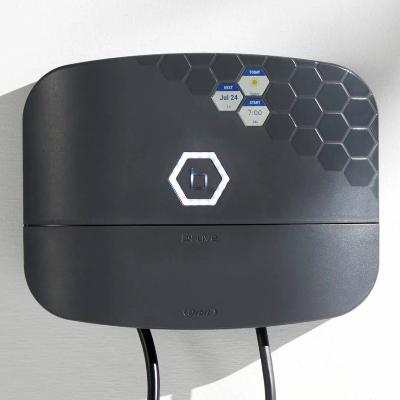
Orbit
Why buy: A slightly more cost-effective option, the Orbit B-Hyve XR comes with great features, like an LED screen that shows live, real-time status updates. It uses WeatherSense technology to automatically adjust to the weather so you don’t waste water. It also meets EPA WaterSense standards, and the B-Hyve app is available for free on iOS and Android devices.
Smart home energy monitors
There are now smart home energy monitors that attach directly to your home’s electrical box. They work by monitoring your energy consumption in real-time and can show patterns of electrical usage over a day, week, or month.
Continuous monitoring, right down to the appliance level, can help you save on energy costs and acts as the baseline for energy conservation. These monitors can also show which appliances are falling behind in energy efficiency.
Sense Home Energy Monitor
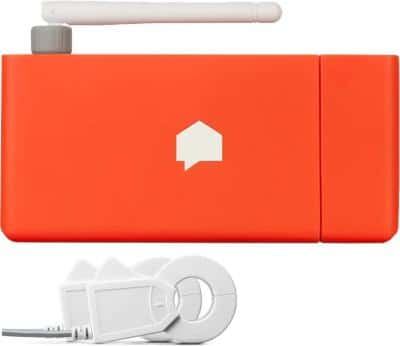
Sense
Why buy: This is a top-of-the-line energy monitor, and comes in both standard and solar variations. They plug into just about any existing electrical panel and then connect to a smart phone application that provides real-time data whenever you want it. Sense is a bit pricey, but comes with far more features and functionality than any of the others.
Efergy Elite 4.0 Wireless Energy Monitor
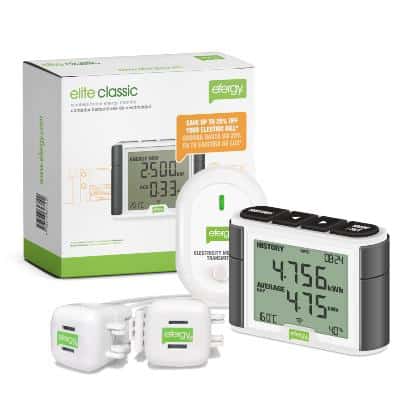
Efergy
Why buy: This Efergy system provides a cost-effective means of monitoring your home’s electrical usage. The device connects easily to any home electrical box for fast and easy installation that does not require an electrician. The downside to this particular system is that there is no smartphone application for live tracking, instead using a compact, portable display.
Gen 2 Emporia Vue Smart Home Energy Monitor
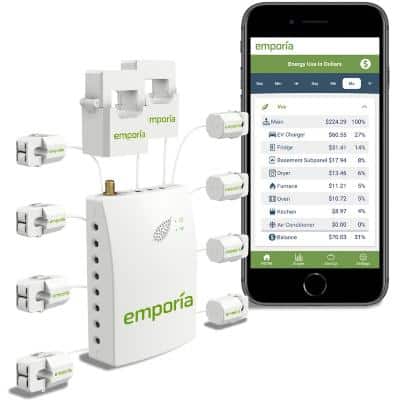
Emporia
Why buy: Emporia’s Vue monitoring system offers device detection that can show you the performance of individual appliances in your home. You can even set schedules for select appliances where applicable, providing a greater level of detail about your electric bill. With this system, you can lower your energy costs and your emissions at the same time.
Other smart home products to consider
As comprehensive as this list is, it doesn’t cover all of the smart devices out there. Home security systems, garage doors, and other appliances are now able to connect to your smart home system.
Smart fridges
Refrigerators are becoming smarter, too. Not only can they cut down on energy usage, they can even create shopping lists based on the contents inside. Smart fridges have evolved to feature LED touch-screens and even web browsing.
Home security
Smart locks, doorbells, and security systems have made it easy to find peace-of-mind. Users can view cameras in real-time remotely and even use video doorbells to see who is at the door.
Smart TVs
Smart TVs allow users to access their favorite apps, surf the web, and so much more, all through their remote. They also use much less energy than older models, and most are ENERGY STAR certified for efficiency.
Upgrade to a smart home to save energy
Upgrading your home to a smart setup has never been more beneficial. Whether you are looking to gain improved convenience and connectivity, cut down on energy costs, or both, smart home setups are the way to go. Combine any number of smart home devices to create the right setup for a more energy-efficient home.
Ryan Womeldorf is a freelance writer who covers technology and consumer goods, including smart home tech. He is a husband and father of two (five if you count his pups).
- The Best Air Purifiers for Your Home - EcoWatch
- Google Nest Review: Can They Save You Money and Energy ...
- What Is a Smart Home Energy Monitor? Find Out With Our Guide ...
- Our Best Smart Thermostat List Can Save You Energy and Money ...
- Your Smart TV May Be Wasting Lots of Energy When 'Off'
- Google to Add Air Quality Data to Nest Hub Displays

 233k
233k  41k
41k  Subscribe
Subscribe 